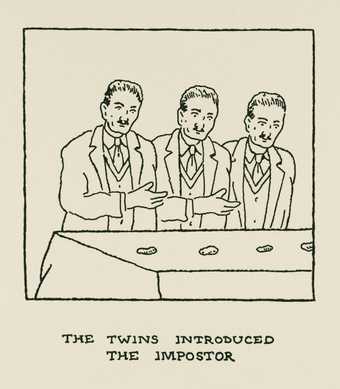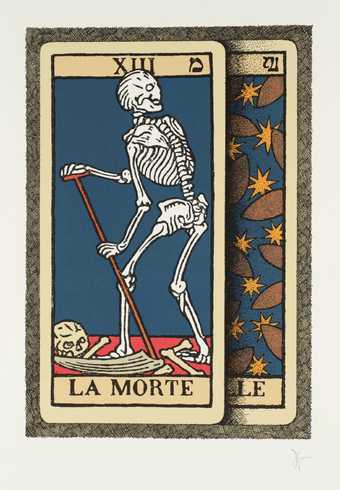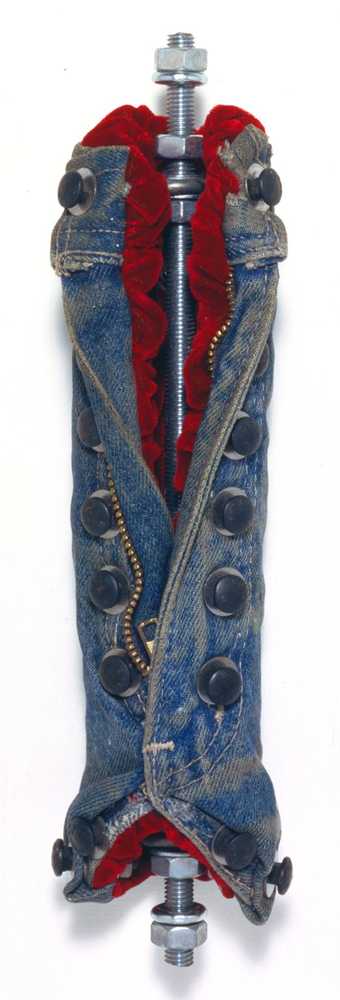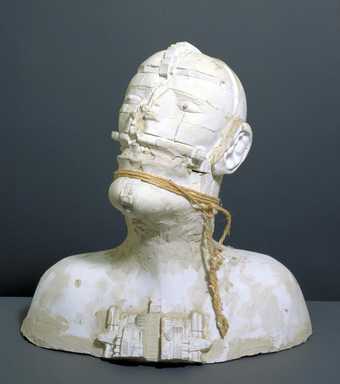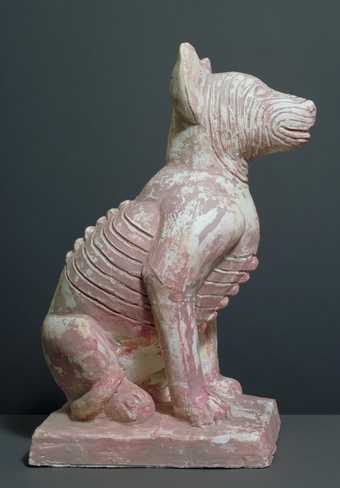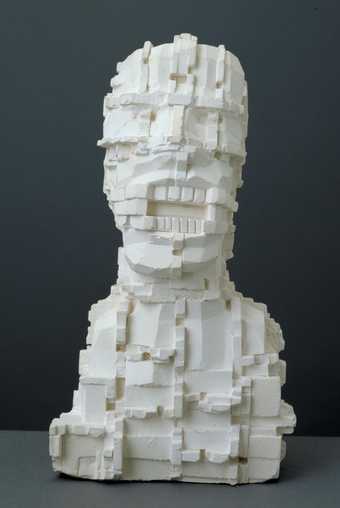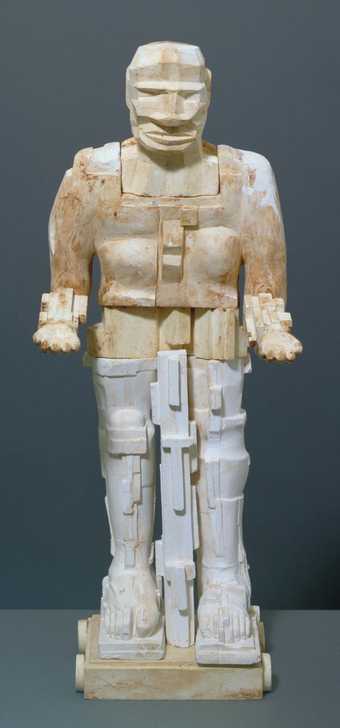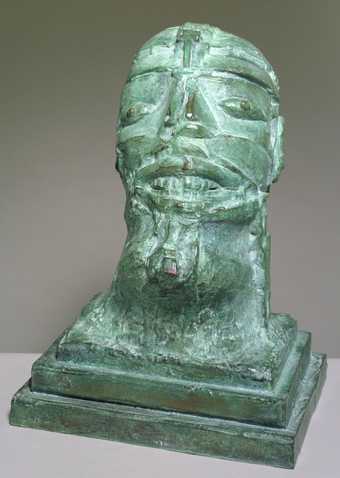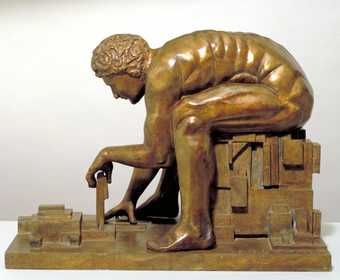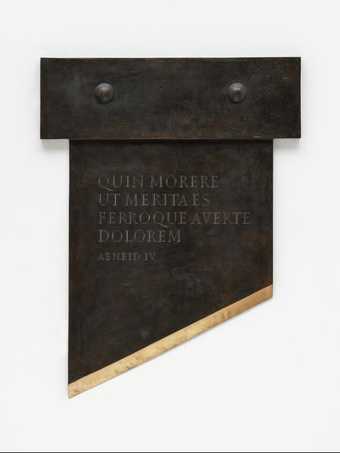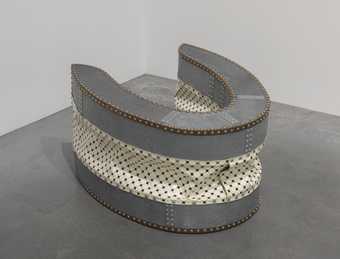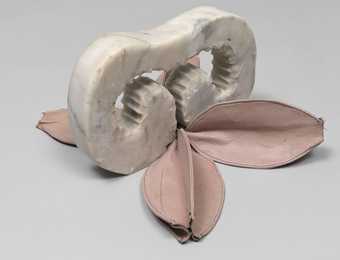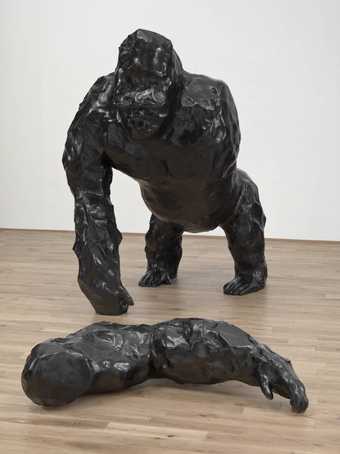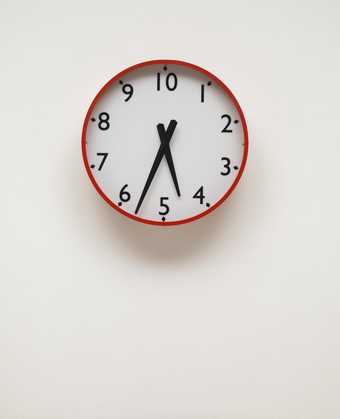
Not on display
- Artist
- Christine Borland born 1965
- Medium
- Leather, sawdust and pvc
- Dimensions
- Display dimensions: variable
Each doll: approx. HWD 80 × 560 × 220mm - Collection
- Tate
- Acquisition
- Presented by the Patrons of New Art through the Tate Gallery Foundation 1999
- Reference
- T07559
Summary
Christine Borland has been exploring themes of creation and destruction through institutional (scientific/forensic/police) analysis and reconstitution since the early 1990s. Beginning with specific behavioural experiments in which objects were destroyed (by having bullets shot at them) to create hypothetical forensic material, she made a series of works in which she gathered together fragments and documentation in order to suggest the process of piecing together a jigsaw of significant evidence. The investigation into the possibilities of interpretation resulting from such a process culminated in From Life 1994 (Arts Council Collection), which was based on a skeleton acquired by the artist through a medical mail order service. With the help of several academic institutions Borland was able to discover basic biographical information about the person (female) originally incorporating the skeleton, and to have her face reconstructed in clay. From Life expresses Borland's desire to bring out the personal aspects of a body which become hidden in hospital and forensic operations: 'I think the ways that we are forced to be institutionalised or compartmentalised by the institutions surrounding the body - health, medicine, birth and death - is an important subject and one which we must try to repersonalise.' (Button, p.136)
Phantom Twins was first shown at the FRAC Languedoc-Roussillon, France in the context of a literary presentation of Mary Shelley's Frankenstein which focused on the monster's requests to his maker for the creation of a mate as palliative to his loneliness. Borland used the monster's plea as the title for a series of illicitly taken photographs of displays in Montpellier's Museum of Anatomy that were shown in the same exhibition. Phantom Twins could therefore be seen as part of a reflection by the artist on the creation of surrogate life-forms from an assemblage of old parts, and on the monstrous part of the human - an alter-ego or double. Originally titled Twin, Hand-made, Childbirth Demonstration Models, Phantom Twins comprises a pair of identical copies of a model made for the eighteenth century Scottish obstetrician William Smellie. Incorporating the word 'phantom' into the title (and taking away the factual description) has expanded readings of the piece into a symbolic and psychological realm: the twins are no longer simply models, but ghosts from the past. In the context of the Frankenstein story, they could be seen to represent a double nature or identity which is present from birth in the subconscious. This internal split manifests itself in the twins' physical make-up: replica foetal skulls under the tightly drawn leather create an eery skeletal effect, which contrasts strangely with the crudely anthropomorphic forms of the soft, stuffed little bodies. At once doll, toy, teaching model and dead infant, these twins lie somewhere in the space between the human and natural desire to (pro)create and a Frankensteinian perversion of that desire. They serve as a reminder that the ghosts of deformity common to all humans are present from birth, as inevitable as the deathly reminder of the skull which must forge its way out of the maternal body.
Further reading:
Christine Borland, exhibition catalogue, FRAC Languedoc-Roussillon, Montpellier 1997
Virginia Button, The Turner Prize, London 1997
Christine Borland, exhibition catalogue, Tramway, Glasgow 1994
Elizabeth Manchester
May 2000
Does this text contain inaccurate information or language that you feel we should improve or change? We would like to hear from you.
Display caption
Borland creates sculptural installations that use the language of medical and forensic science to examine the human condition. 'Phantom Twins' consists of two dolls that replicate those used in the eighteenth century to demonstrate childbirth to medical students. Beneath the stretched leather the skulls are visible. The original dolls would have contained real foetal skeletons, while Borland used plastic replica skulls obtained from an osteological supplier. Borland is working with ideas about the creation of life and the frailty of human existence.
Borland is interested in Mary Shelley's creation, the doctor-scientist called Frankenstein. The story of Frankenstein contains many intimations of Mary Shelley's grief at the young deaths of her own children.
Gallery label, August 2004
Does this text contain inaccurate information or language that you feel we should improve or change? We would like to hear from you.
Explore
- emotions, concepts and ideas(16,416)
-
- universal concepts(6,387)
-
- creation(29)
- destruction(383)
- scientific and measuring(791)
-
- scientific model(13)
- doll(46)
- baby(526)
- magic and occultism(206)
-
- ghost(80)
- birth to death(1,472)
- twins(40)
You might like
-
Glen Baxter The Twins Introduced the Imposter
1978 -
Tom Phillips Canto XX: [no title]
1982 -
Cathy De Monchaux Erase
1989 -
Sir Eduardo Paolozzi Kardinal Syn
1984 -
Sir Eduardo Paolozzi Mayan Dog
1985 -
Sir Eduardo Paolozzi Mondrian Head
?1989 -
Sir Eduardo Paolozzi Small Daedalus
?1992 -
Sir Eduardo Paolozzi Count Basie
1987 -
Sir Eduardo Paolozzi Newton
1988 -
Ian Hamilton Finlay Quin Morere
1991 -
Richard Deacon Art For Other People #24
1987 -
Richard Deacon Art For Other People #12
1984 -
Angus Fairhurst A Couple of Differences Between Thinking and Feeling II
2003 -
Ian Hamilton Finlay Monument
1991

